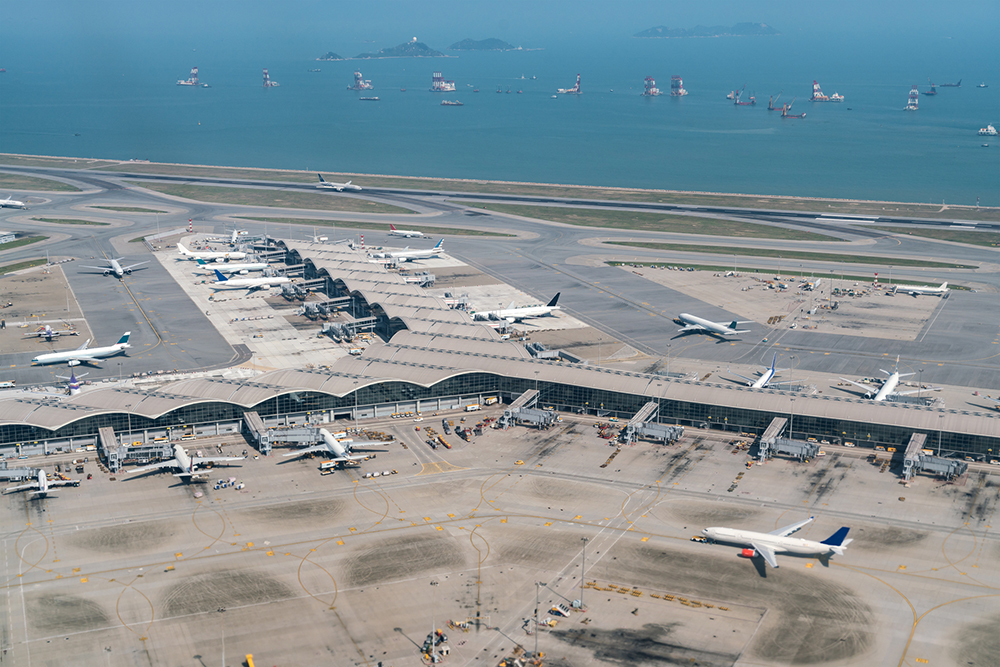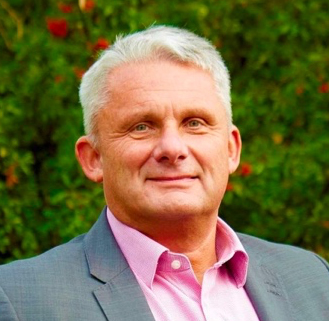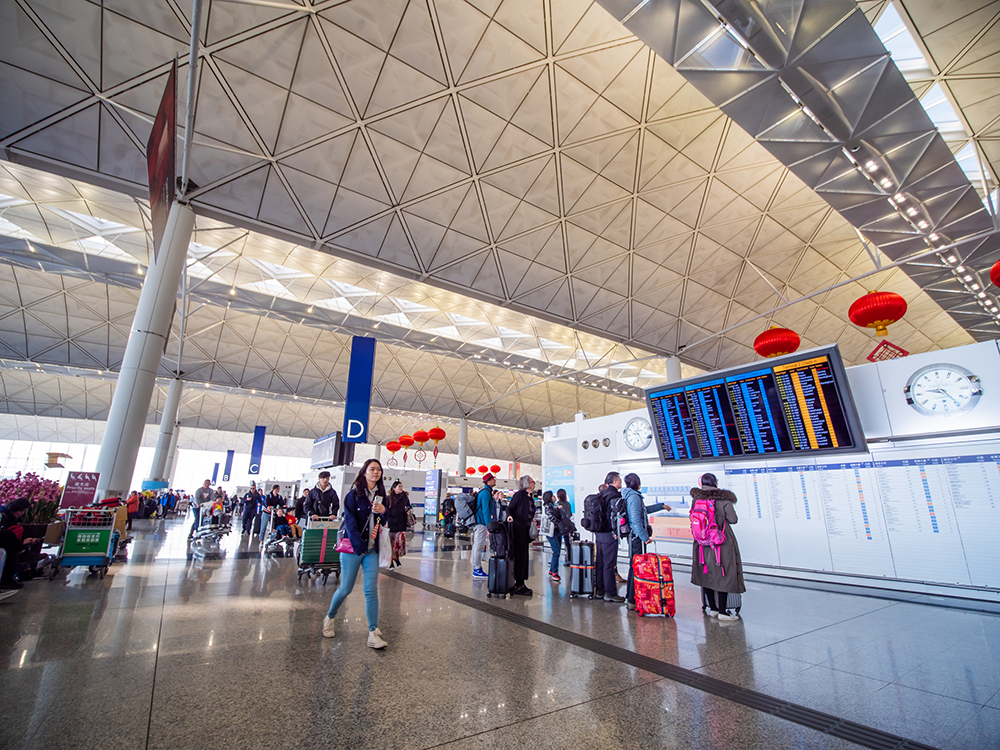
Image: Prasit Rodphan | Dreamstime.com
Scott Brownrigg board director Richard McCarthy and Atlas Industries project director John Williams talk to Denise Chevin about their joint venture Digital Twin Unit, a new business providing digital twin services, and its work on a digital twin for Hong Kong Airport.
Digital twins in construction is an increasingly hot topic, but what can harnessing this technology mean for the industry? Questions often relate to the role of digital twins, their relationship with BIM models and what more they have to offer.
Richard McCarthy explains: “BIM was developed and intended to provide efficiencies in construction, in the way that you coordinate the design and delivery of the building projects.
“Obviously, there are benefits in terms of having an up-to-date model document of your building once you’ve handed it over. It’s the ultimate health and safety manual. And that forms the base of what a digital twin should be.
“But once you start using this digital representation in a platform environment, and start making integrations with different data streams, that’s what really turns it into a digital twin.
“It’s live and learning all the time, making sense of lots of different data streams, and putting that all together in a nice simple environment that you interpret and visualise easily.”
Williams and McCarthy have worked with many of the large industry consultants, developers and asset managers providing digital support for design. What sets Digital Twin Unit apart from competitors, they say, is a sole offer and focus on digital twin services. Digital Twin Unit comprises a specialist team that draw upon the design skills of global architectural practice Scott Brownrigg and the digital technology expertise of Atlas Industries.

“New legislation will impact the design of high-rise residential, and I think BIM and digital twins are going to have a big part to play in providing the golden thread of information.”
Digital Twin Unit currently has nine digital twin projects of notable size in its portfolio, ranging from offices, university campuses and airports in Australasia to living accommodation in Europe.
“The earlier projects were more about digitising, and creating data all in one place. But in the last 12 months, it’s been much more about the data integration piece, the platform, and having somewhere you can see your data live, and make use of it live,” explains McCarthy.
“The Digital Twin Unit mostly works on existing buildings, or buildings that are in the process of being built, but doesn’t necessarily need to be involved in the design process.
“When we do our first presentations to clients, there’s normally three areas that clients focus on when they want a digital twin. Usually, the biggest one is operational benefits: ‘Can I get all the information I need from my building management systems, the plant room, the air quality, even vibration monitors on equipment like escalators, all in one place?’
“The second is basically user experience. For example, for an office building, looking at occupancy levels and trying to understand utilisation. Or an airport thinking about how it can reduce queueing times.
“And the third one is planning for future development, planning for change. And that’s more your digital ‘building passport’, where you have a really good record of what you’ve got, you can understand how you might want to adapt your building, or move things around.”
McCarthy says that airports have been the biggest adopter of digital twins because they need all the above. “Because their operational costs are so high, they tend to see the benefits of a digital twin quite quickly.”
“I think most airports will have some level of digital twin at some point in the foreseeable future,” adds Williams.

“I think most airports will have some level of digital twin at some point in the foreseeable future.”
Payback can be problematic, in that in airports like Heathrow, expenditure must be approved by airlines who want to see a benefit to it.
The two companies came together to set up the Digital Twin Unit about a year ago, but had been working closely together before that, with Atlas developing a digital twin for Foster + Partners’ iconic Terminal 1 at Hong Kong International Airport (HKIA).
“HKIA, which is government owned, has this amazing longer-term vision where the digital twin is going to have an impact on their whole customer experience.
“They have this plan that in the future their airport is going to be super smart, and passengers are going to be able to walk in through the doors where the twin will pick them up. There will be no need to check in, visitors can head straight to the departure lounge, browse the shops or have a bite to eat, before walking onto the plane. And the twin is going to be a big part of enabling that.”
McCarthy continues: “They’re not at that stage now, but now that HKIA have digitised their biggest terminal, they’re starting to take a couple of steps on that smart airport journey. They’re really driving it, because they’ve got that vision.”
In the UK, McCarthy says: “New legislation will impact the design of high-rise residential, and I think BIM and digital twins are going to have a big part to play in providing the golden thread of information.”
Williams concurs and says how one client, a US developer of student and residential accommodation, is looking to create a digital twin to help them with compliance issues and health and safety coming through the Building Safety Bill.
“Everyone looks at twins and opportunities they bring differently. It’s down to individuals to drive this stuff forward. It’s the same as BIM ten years ago – people who have embraced it are the ones who have taken it to new heights,” he says.
“The success of a digital twin is like the success of any other project. It’s about planning it and making sure that the client understands what they’re getting, and when they’re getting it.”
Case study: Hong Kong International Airport

Digital Twin Unit [originally Atlas] has been working for three years to create a digital twin for Terminal 1 of the iconic structure, although in time the whole airport will be turned into a digital twin.
The overall digital strategy for the Airport Authority in Hong Kong is to digitise people’s interaction with the terminal and manage it.
Terminal 1 measures 700,000 sq m over nine floors. The twin was created from data from multiple sources – initially from as-built 2D CAD information and then from laser scan surveys. The project is to deliver BIM models for architecture, structural and civil engineering, MEP and special airport services.
The digital data is to assist with two aspects of the airport – asset management and facilities management, together with providing visualisation for future development and expansion.
The existing airport zones were mimicked using a multi-discipline BIM software model containing architectural, structural and mechanical, electrical and plumbing services. This data provided from the airports’ asset management system was integrated with a geographical information systems map to create the static state of the twin.
A development platform designed to integrate and create 3D models, used in video games and architecture was then used to navigate the 3D model of the airport in a photo-realistic manner.
To bring the digital twin to life, the model is linked to real-time data from IoT devices throughout the airport, together with simulation tools, corporate applications and an enterprise analytic platform to enable HKIA to predict what could happen in the future.
All nine floors were captured in the digital twin from the apron level up to the roof, encompassing arrivals and departures with emphasis on passenger-facing areas.
“Our digital twin is a virtual 3D model in which data from different sources can be integrated, made available instantly, visualised in a human-centric interface and analysed to make predictions in an explainable way,” says Andy Bien, chief information officer at Airport Authority Hong Kong.












